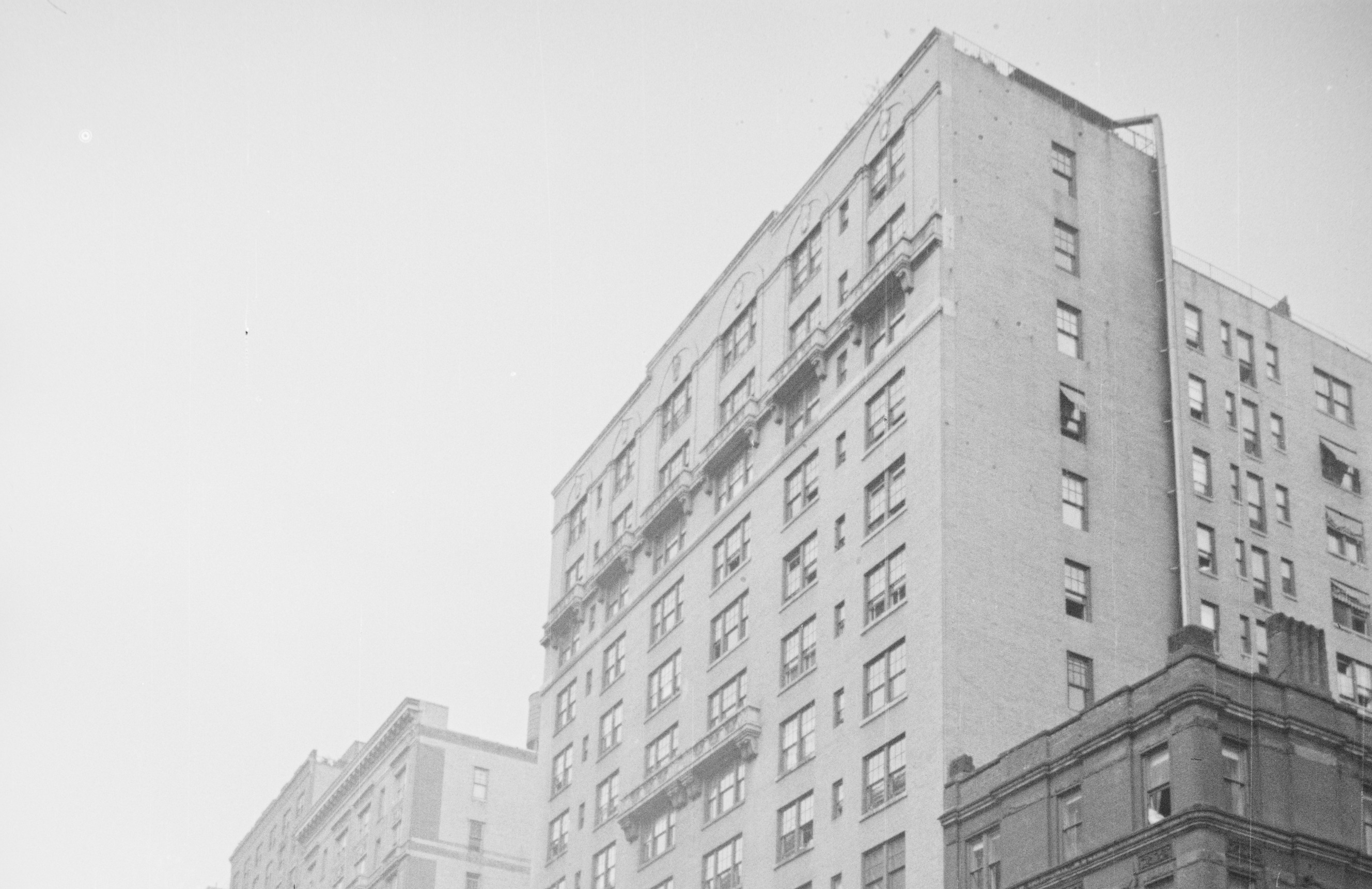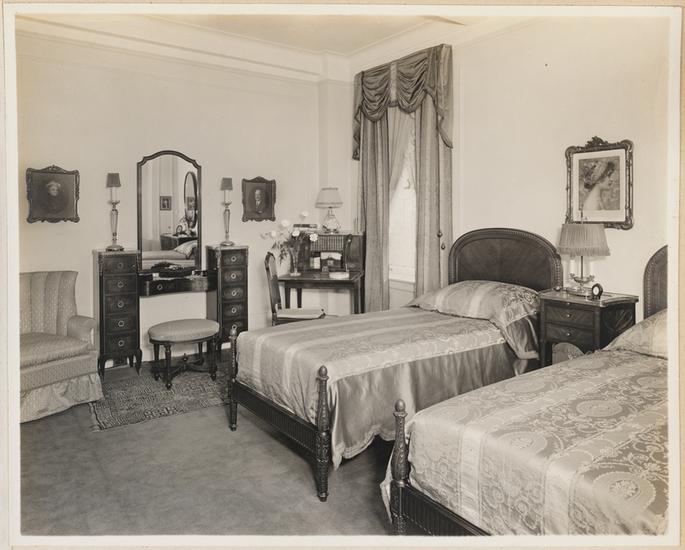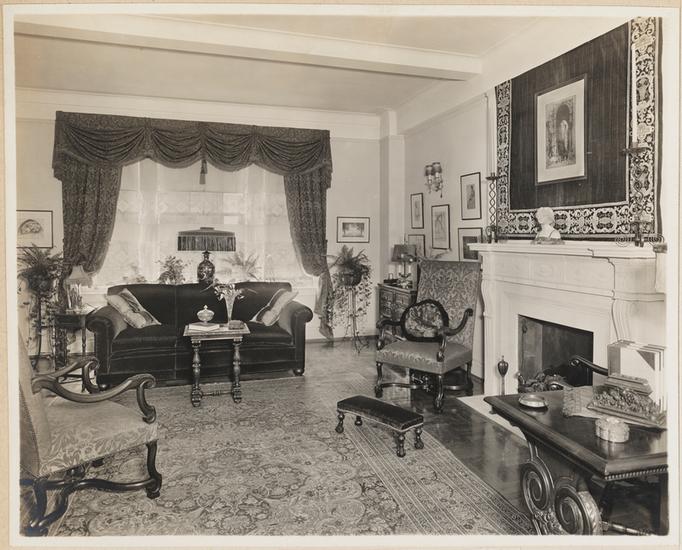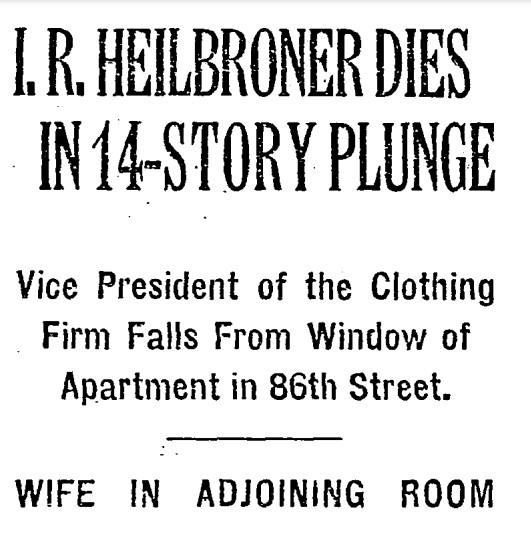
168-172 West 86th Street
by Tom Miller
On December 9, 1923, The New York Times reported, “Among the many new apartments in the Upper West Side is 168 West Eighty-sixth Street…The house contains apartments of six and seven rooms with three baths, and although it will not be completed for Fall occupancy, over 75 per cent of it has already been leased.” The 14-story structure was designed by Schwartz & Gross and cost its developer, the 168 West 86th Street Corp. $450,000 to construct (more than $8 million in 2024 terms).
The stoic Renaissance Revival design offered little ornamentation other than the two-story stone entrance framework with its second-floor faux balcony and classical, triangular pediment. Clad in beige brick, the building rose to a stepped parapet below which heraldic shields adorned the blind arches of the top floor windows.
The apartments, three per floor, were leased to professional tenants, like attorney J. Alvin Van Bergh and his wife, Beatrice. Born in Philadelphia in 1900, he was a graduate of Harvard Law School. A member of the firm Proskauer, Rose, Goetz & Mendelsohn, he was the author of Jurisdiction of the Court of Appeals.
Dr. Herman Jarecky, his wife, the former Lillian Amster, and their daughter, Felice Helen, were also initial residents. Dr. Jarecky was born in New York City and graduated from City College in 1883 and from the College of Physicians and Surgeons in 1886. A specialist in diseases of the ear and throat, he was a founder of the Sydenham Hospital.
Despite her father’s esteem within the medical community, it would be Felice Jarecky Louria who garnered attention.
Felice Jarecky graduated from Barnard College in 1920. On January 22, 1925, she was married to Dr. Henry W. Louria in the St. Regis Hotel. Despite her father’s esteem within the medical community, it would be Felice Jarecky Louria who garnered attention. She became chief of the Bureau of Enforcement for the Division of Women in Industry and Child Labor within the New York State Department of Labor. In 1937, she became executive secretary of the Consumers League of New York, and the following year, was among the delegation of the National Consumers Federation to visit the White House to present a proposal for a national consumers’ agency. In the 1960s, she was a spokesperson for the Job Corps.
Among the Jareckys’ neighbors in 1926 were John Crawford Thomson and his wife, the former Ella Josephine Northrup. The Scottish-born attorney was considered one of the foremost authorities on the legal aspects of state and municipal bond issues and was the author of several books on taxes and civil procedure. He was a member of the law firm of Thomson, Wood and Hoffman.
Irwin R. Heilbroner was described by the New Castle News as the “millionaire vice president of Weber and Heilbroner, a chain of men’s furnishings stores.” He married Bessie Baumann on November 18, 1917. At 5:00 on the evening of December 13, 1928, Heilbroner left his office and arrived at their 14th-floor apartment just before 6:00. The Cohoes, New York American reported, “He greeted his wife and played with a pet dog for a few minutes. Then he went to his room to prepare for the visit of a masseur with whom he had an appointment.”
A few minutes later, Bessie answered a knock on the door. The building superintendent, James Sullivan, and a policeman told her that her husband’s body was in the courtyard of the building. In the couple’s bedroom, the window–which was about two-and-a-half feet from the floor–was open. Heilbroner’s coat and vest were on a chair. The New York Sun reported that the 39-year-old had been instantly killed.
Bessie told investigators that that Irwin had been in ill health for about five years, and that he “suffered from sleeping sickness and attacks of vertigo.” In the end, the coroner decided to accept Bessie’s explanation that he had lost his balance while opening the window for air and fell out.
Harry Garfunkel, a fur merchant, and his wife, Anna, lived here in 1930 when Mabel Taormina sued Garfunkel for false arrest. Mabel was a motion picture actress known on stage as Mabel Stapleton. (Exactly what the charges were that prompted her arrest is unclear.) On April 28, Garfunkel was called to the witness stand to testify in his defense. He answered a few opening questions like, “Where do you live?” and “How old are you?” and then, according to The New York Times, “his head suddenly sank upon his chest and he died.”
In the gallery were Anna Garfunkel and the couple’s two sons. The Times said that as court attendants tried to lift her husband’s lifeless body, “a hysterical scene followed.” Anna screamed and then pointed at the actress, shouting, “She did it! She did it!” The article said, “Mrs. Garfunkel, after several minutes of hysteria, was calmed by her sons, and Justice Ingraham adjourned the trial until tomorrow morning.” (With the defendant dead, the purpose of continuing the trial is a mystery.)
…according to The New York Times, “his head suddenly sank upon his chest and he died.”
In 1968 resident Barbara Koz Paley opened the Kozmopolitan Gallery in her apartment. The art consultant and real estate investor would operate the gallery here through 1970.
Life in the building was not without its occasional upheavals. On February 14, 1973, for instance, The New York Times reported, “The rock garden of a penthouse at 168 West 86th Street leaks and is causing damage to the apartments of other tenants below.” The building’s landlord had sought a court order “directing the rock garden’s removal ‘forthwith.’”
And two years later, in January 1975, demolition began on the vacant, five-story brownstone at the corner of Amsterdam Avenue and 86th Street. Among the residents of 168 West 86th Street were Robert J. Cochnar, a newspaper syndicate executive, and his wife. One day she called him at work and said, “Guess who’s moving in next door?” and began humming the McDonald’s jingle. Within days Cochnar had organized the Committee of Neighbors Against McDonald’s.
Today the sedate building sits on an equally sedate block, with no McDonald’s to be found.
Tom Miller is a social historian and blogger at daytoninmanhattan.blogspot.com





